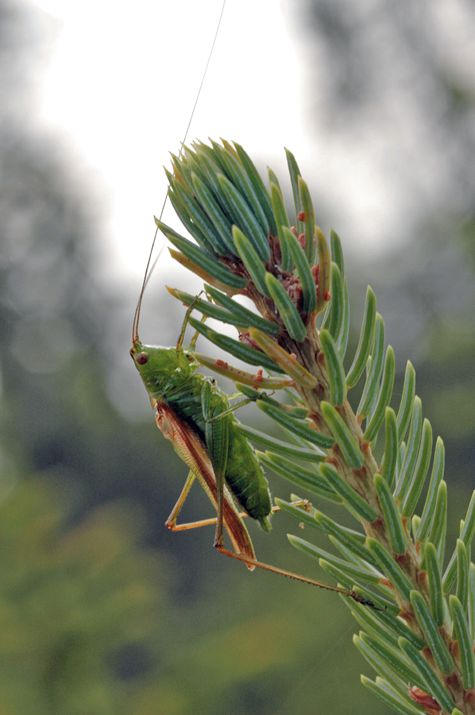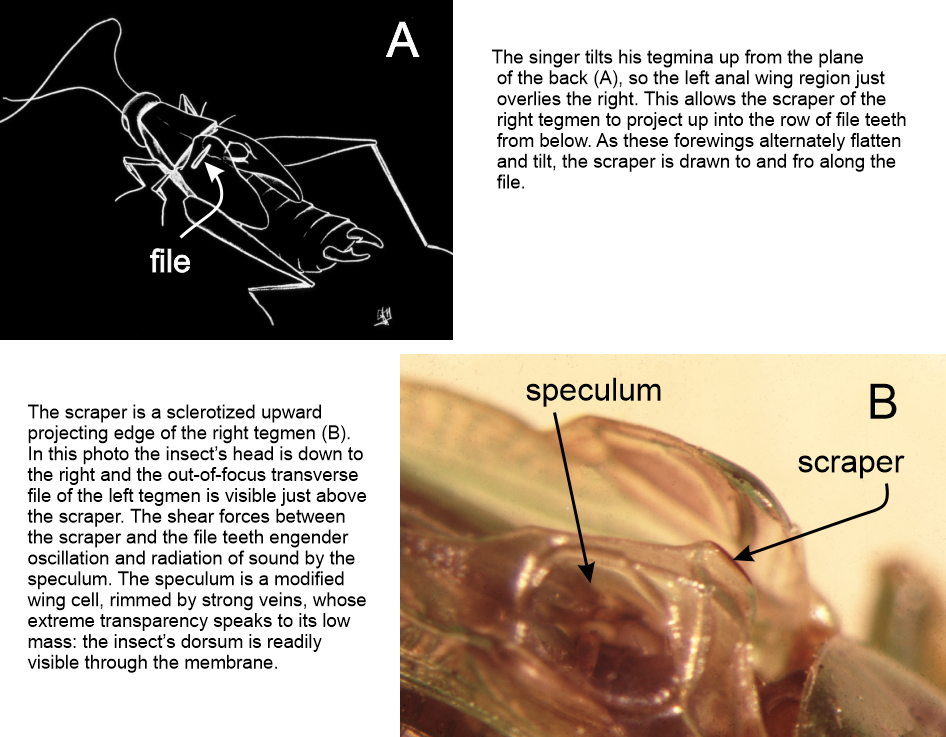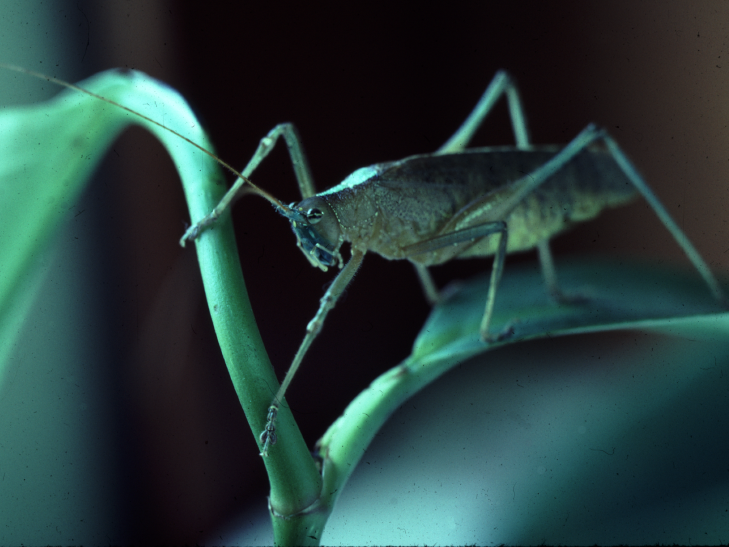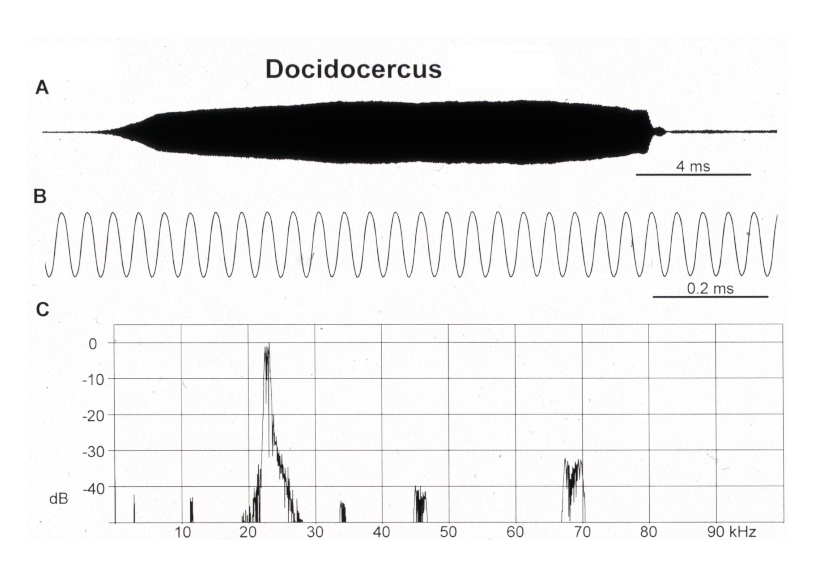 Lewis Carroll’s looking-glass gnat asks Alice “What sort of insects do you rejoice in where you come from?” I’ve always liked the gnat’s self-assured premise – that one must rejoice in insects. Yes, biting flies are less rejoiceable than butterflies, but blackflies are at least respectable, even admirable in that they do their biting so well. To my mind the insects I have studied since 1963 – katydids (Orthoptera, Tettigoniidae) -- are altogether: admirable, respectable and rejoicable. I have my answer all ready for the gnat: this website rejoices in katydids.
Lewis Carroll’s looking-glass gnat asks Alice “What sort of insects do you rejoice in where you come from?” I’ve always liked the gnat’s self-assured premise – that one must rejoice in insects. Yes, biting flies are less rejoiceable than butterflies, but blackflies are at least respectable, even admirable in that they do their biting so well. To my mind the insects I have studied since 1963 – katydids (Orthoptera, Tettigoniidae) -- are altogether: admirable, respectable and rejoicable. I have my answer all ready for the gnat: this website rejoices in katydids.
Stridulation is sound generation by friction. It is something katydids do well; it happens when an animal shears roughened body surfaces together, to and fro, making a sound. Insect exoskeleton predisposes them to evolving stridulation organs almost anywhere on their body surface. Katydids displace their flexed and canted forewings to and fro, a scraper edge of the left forewing engaging from below with a row of teeth on the underside of a transverse running wing vein. The scraper-tooth interactions shock thinned transparent wing cells (speculae) into vibration. (Left) A male of Conocephalus fasciatus sings on spruce.

Some katydid songs are mostly one frequency. A good example is the pseudophylline katydid Docidocercus gigliotosi (Panama) calling from understorey vegetation at night. The scraper moves along the file passing over its many tiny teeth, and at each tooth passage drives wing parts to oscillate smoothly making a single sine wave of sound (B) which goes together (A) to make a prolonged pulse of 25 ms or so duration. The spectrum shows a strong single peak at about 23,000 Hz, i.e., this is the rate of scraper contacting and interacting with each file tooth.
The scraper moves along the file passing over its many tiny teeth, and at each tooth passage drives wing parts to oscillate smoothly making a single sine wave of sound (B) which goes together (A) to make a prolonged pulse of 25 ms or so duration. The spectrum shows a strong single peak at about 23,000 Hz, i.e., this is the rate of scraper contacting and interacting with each file tooth.

